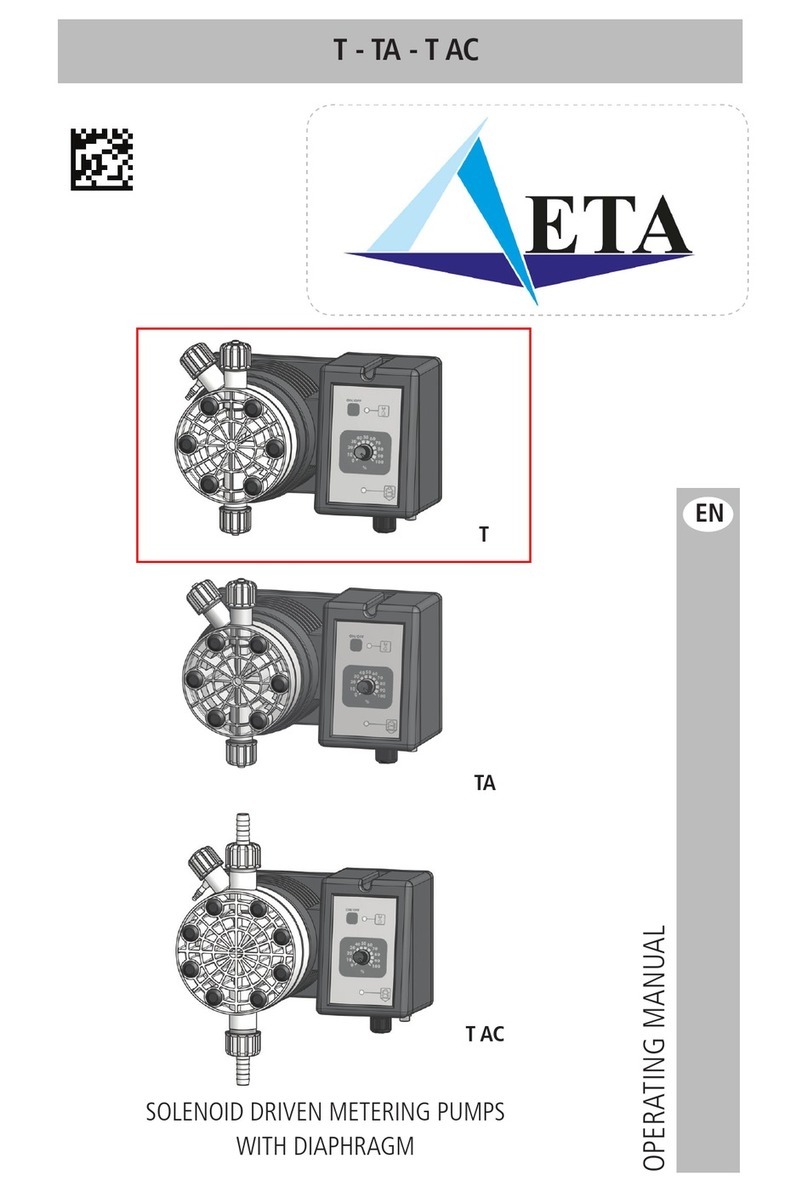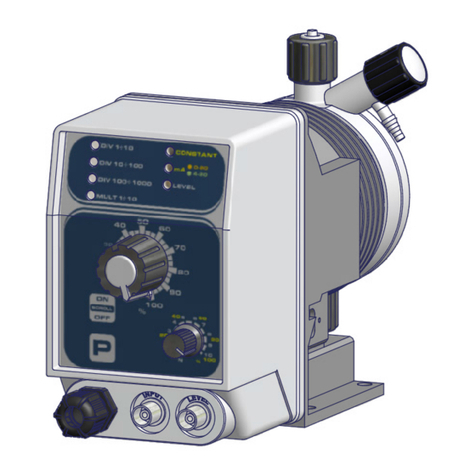
DOSEURO®
XMPE0TMA125SST014 2014 EDITION
"PTFE" GASKET REPLACEMENT AND ADJUSTMENT
Replacement of gasket pack (execution head 21)
After maintenance, proceed as follows:
Disconnect the pumping head 1from the system and
from the lantern on the metering pump.
Wash the pumping head so that the operator can safely
handle the component.
Loosen the locking ring 11 until completely removed.
Check the plunger for wear 2, and replace it if
scratched or worn. Do this by loosening the dowels 15.
Extract the ruined gasket pack 3, insert the new one
inside the pumping head paying attention to the
orientation direction of the gaskets.
Tighten the locking ring 11 until the gaskets touch,
without tightening further.
Insert the pumping head 1on the plunger, push it up to
the lantern and fix it with the screws 4.
Adjustment and compression of the "PTFE" gaskets
Work as follows to make any adjustments:
Connect the metering pump to the system piping and bring the pressure up to speed.
Acting on locking ring 11, gradually fasten to compress the gaskets making sure there is no
liquid leaking.
The gasket pack control and adjustment operations must be performed periodically. In
executing the adjustment operation, the operator must not excessively fasten the locking ring
in order to preserve the integrity of the gaskets.
HEAD WITH WASHING
This type of head, that provides for the washing of the
internal parts, is used when the liquid to be dosed can
create abrasion or solidification.
Typical representation of the system to execute
washing.
Washing the seal gaskets
Let the water continuously flow through the area
containing the seal gaskets, with a flow rate of 40/50
l/h, at a pressure of 0.5/1 bar.
It is essential to continuously wash the gaskets as it
helps remove any fouling and stops the product from
solidifying and damaging the seal profiles.
FROM THE WATER
MAINS FOR HEAD
WASHING
FROM THE WATER
MAINS FOR GASKET
WASHING
PIPING FOR
DRAINING
WASHING
DELIVERY PIPING TO
SYSTEM
































